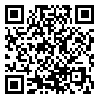Volume 12, Issue 4 (7-2014)
Nursing and Midwifery Journal 2014, 12(4): 320-328 |
Back to browse issues page
Download citation:
BibTeX | RIS | EndNote | Medlars | ProCite | Reference Manager | RefWorks
Send citation to:



BibTeX | RIS | EndNote | Medlars | ProCite | Reference Manager | RefWorks
Send citation to:
Feizalahzadeh H, Zagheri Tafreshi M, Moghaddasi H, Ashgili Farahani M, Tayebi Khosrovshahi H, , Zareh Z et al . EFFECTS OF MULTIMEDIA BASED EDUCATION AND TRADITIONAL METHOD ON PATIENTS’ HEMODIALYSIS KNOWLEDGE AND TREATMENT ADHERENCE. Nursing and Midwifery Journal 2014; 12 (4) :320-328
URL: http://unmf.umsu.ac.ir/article-1-1978-en.html
URL: http://unmf.umsu.ac.ir/article-1-1978-en.html
H. Feizalahzadeh1 
 , M. Zagheri Tafreshi *
, M. Zagheri Tafreshi * 
 1, H. Moghaddasi1
1, H. Moghaddasi1 
 , M. Ashgili Farahani2
, M. Ashgili Farahani2 
 , H. Tayebi Khosrovshahi3
, H. Tayebi Khosrovshahi3 
 , Z., Zareh3
, Z., Zareh3 
 , N. Farhadmand3
, N. Farhadmand3 


 , M. Zagheri Tafreshi *
, M. Zagheri Tafreshi * 
 1, H. Moghaddasi1
1, H. Moghaddasi1 
 , M. Ashgili Farahani2
, M. Ashgili Farahani2 
 , H. Tayebi Khosrovshahi3
, H. Tayebi Khosrovshahi3 
 , Z., Zareh3
, Z., Zareh3 
 , N. Farhadmand3
, N. Farhadmand3 

1- Shahid Beheshti University of Medical Science
2- Iran University of Medical Sciences
3- Tabriz University of Medical Sciences
2- Iran University of Medical Sciences
3- Tabriz University of Medical Sciences
Abstract: (6322 Views)
EFFECTS OF MULTIMEDIA BASED EDUCATION AND TRADITIONAL METHOD ON PATIENTS’ HEMODIALYSIS KNOWLEDGE AND TREATMENT ADHERENCE Feizalahzadeh H , Zagheri Tafreshi M *, Moghaddasi H , Ashgili Farahani M , Tayebi Khosrovshahi H , Zareh Z , Farhadmand N Received: 6 Apr, 2014 Accepted: 11 Jun, 20114 Abstract Background & aims: Patients on hemodialysis need effective self-care education. Computer-based patient education is an effective educational method. The aim of this study was to compare the effects of multimedia based education, and traditional method on patients’ hemodialysis knowledge and treatment adherence. Materials & Methods: In this quasi- experimental study, all of the patients referred to four hemodialysis centers in Tabriz City were divided randomly into intervention and control groups. A knowledge (Cronbach’s alpha = 0/78) and treatment adherence questionnaire (Cronbach’s alpha = 0/84) were completed as a pretest and repeated three months after the educational program. The intervention group interfaced and navigated their way through the Hemodialysis and Essentials Care application with a laptop during their hemodialysis time. The control group received the same content in the traditional way (face to face and pamphlet). Results: Findings showed that post-education knowledge mean scores had changed substantially (p< 0/05) in both the intervention (n= 32) and control groups (n= 30), however, treatment adherence mean scores were statistically significant only in the intervention group (p< 0/05). There were no statistically significant differences between the two groups in pre- and post-education knowledge and treatment adherence mean scores (p>0/05). Conclusion: The Hemodialysis and Essentials Care application based education improved patients’ knowledge and treatment adherence compared to the traditional method. This application could be used to facilitate the patient education process and to improve its quality. Keywords: Hemodialysis, Patient education, Computer-Assisted instruction, Multimedia Address: Department of Nursing, Faculty of Nursing and Midwifery, Shahid Beheshti University of Medical Sciences, Vali-Asr Avenue, Cross of Vali-Asr and Neiaiesh Highway, Opposite to Rajaee Heart Hospital, Tehran, Iran. Postal Code: 1996835119, Tel: (+98)21 88202519 Email: M.z.tafreshi@sbmu.ac.ir
Type of Study: Qualitative |
Subject:
مدیریت پرستاری
| Rights and permissions | |
 |
This work is licensed under a Creative Commons Attribution-NonCommercial 4.0 International License. |



 gmail.com, unmf
gmail.com, unmf